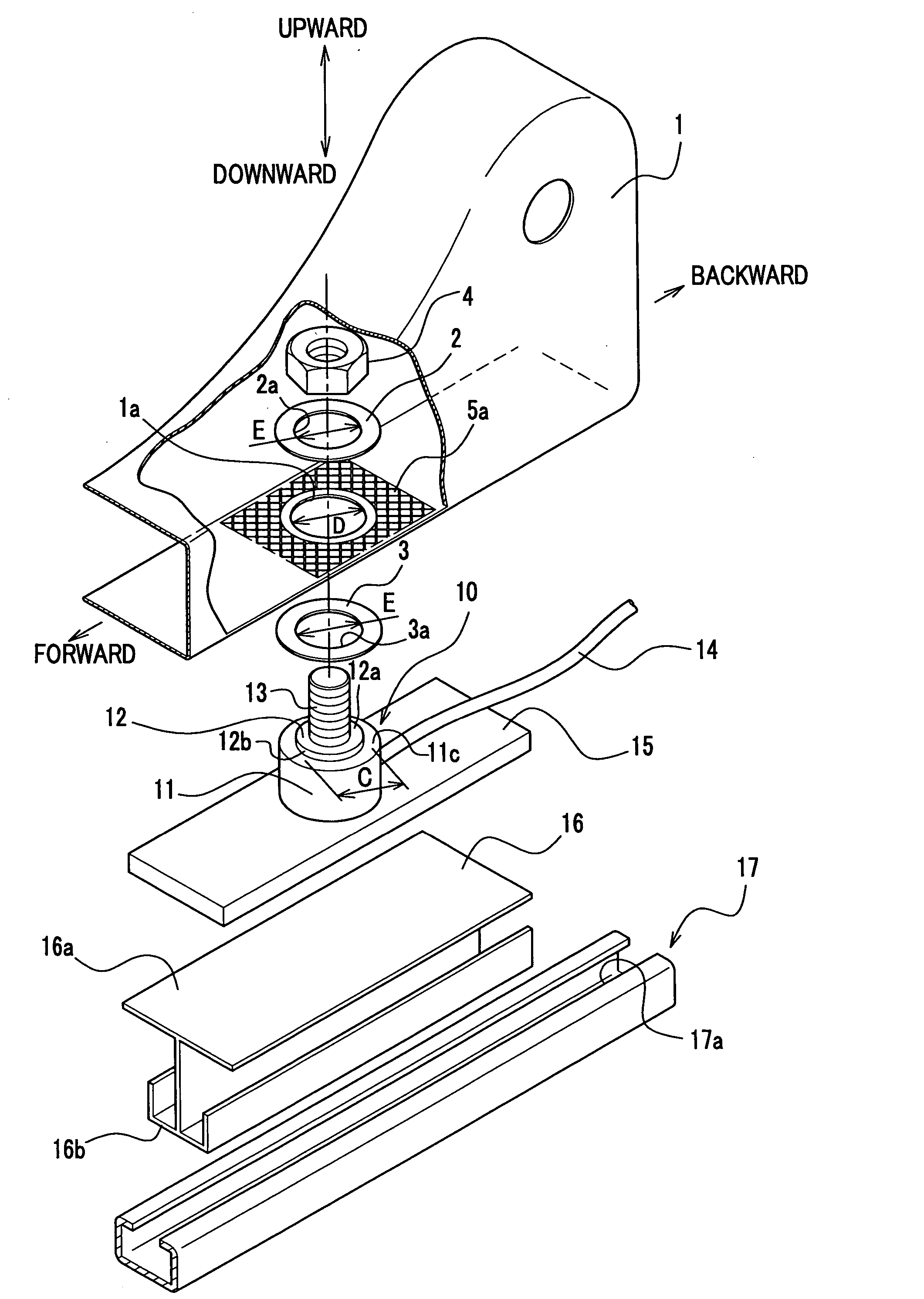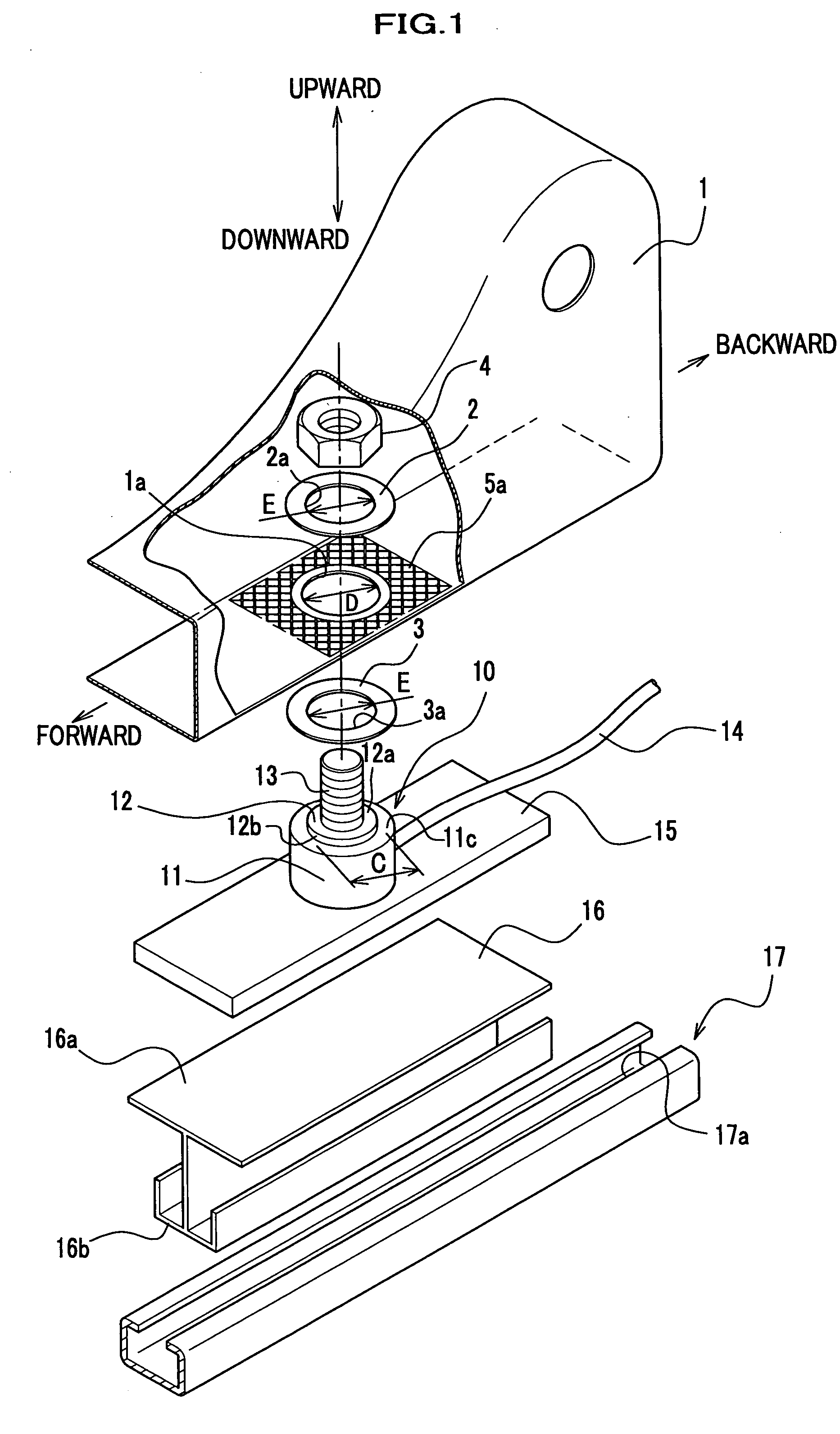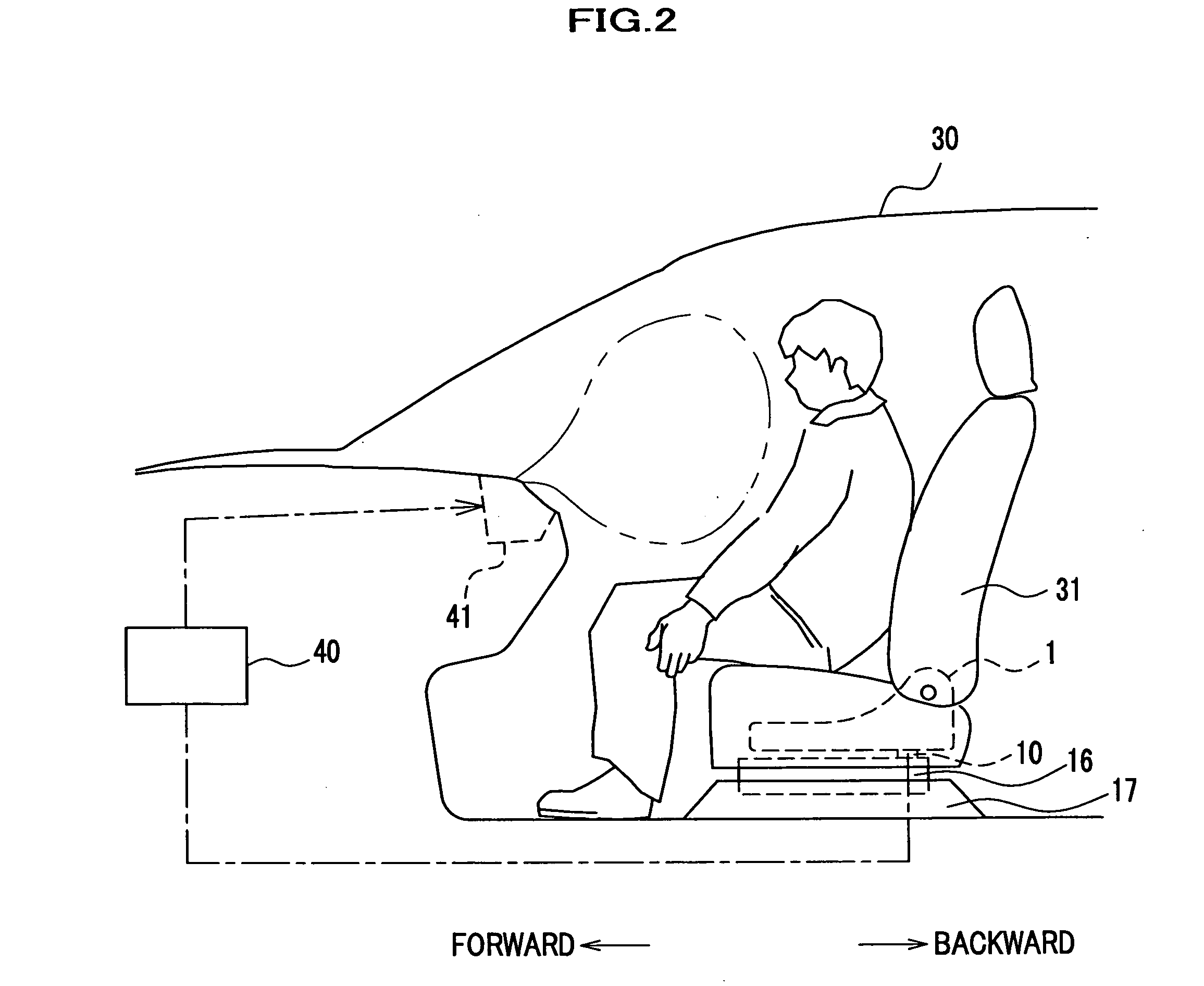Force sensor assembly
- Summary
- Abstract
- Description
- Claims
- Application Information
AI Technical Summary
Benefits of technology
Problems solved by technology
Method used
Image
Examples
first embodiment
a. First Embodiment
[0035] As shown in FIG. 2, a force sensor assembly according to a first embodiment of the present invention is, for example, applied to a side seat 31 of a vehicle 30. The side seat 31 includes a seat frame 1 (a first support member) and a sliding frame 16. A force sensor 10 is interposed between the seat frame 1 and the sliding frame 16. A force which is detected by the force sensor 10 is transmitted to a control unit 40 as an electrical signal, which is used for controlling inflation of an air bag 41 by the control unit 40.
[0036] As shown in FIG. 1, the sliding frame 16 includes integrally formed two portions, a flange 16a and a sliding portion 16b. The flange 16a, which is shaped like a plate, supports a bracket 15. The sliding portion 16b, which has a substantially T-like shape, is supported by a seat rail 17, which is secured to a floor in a cabin. The seat rail 17 has a guide portion 17a running in forward and backward directions, in which a lower portion o...
second embodiment
b. Second Embodiment
[0056] Description is given of a second embodiment of the present invention with reference to the accompanying drawings.
[0057] As shown in FIG. 8, force sensors 110 and a control unit 140 are disposed in a seat 131. When a passenger is seated on the seat 131, four pieces of the force sensors 110, which are mounted between a seat frame 101 and a sliding frame 116 in forward, backward, right and left directions, detect a force acting on the seat 131, which undergoes processing carried out by the control unit 140.
[0058] A signal of force detected by a force sensor 110 is used for an air bag device and a seat belt retractor (both not shown) provided for a side seat. The control unit 140 determines whether the passenger seated on the seat 131 is an adult, a child or an infant based on the signal, providing appropriate inflation of an airbag and pretension of a seat belt according to the passenger.
[0059] The control unit 140 including a CPU and ROM is mounted on the...
third embodiment
c. Third Embodiment
[0103] A force sensor is not necessarily mounted between a seat frame and a sliding frame. It may be alternatively possible that the force sensor is placed between a member, which receives a force including a passenger and a seat, and a lower structural member disposed under a cushion of the seat. For example, it may be possible to place the force sensor between the seat and a floor panel (see FIG. 15).
[0104] A lower structural member disposed under a cushion of a seat, which is placed under a seat cushion 131a, is comparable to a seat frame 101, a sliding frame 116, a seat rail 117 as shown in FIG. 8, or a seat frame 201, a seat rail 217, a rail support member 212, a base frame 213 a seat bracket 214 and a floor panel 215 as shown in FIGS. 15 and 16.
[0105] As shown in FIGS. 15 and 16, a bracket 115 of a force sensor 110 is secured to the base frame 213, which is secured to the seat bracket 214 of the floor panel 215. A nut 104 is tightened onto a threaded porti...
PUM
 Login to View More
Login to View More Abstract
Description
Claims
Application Information
 Login to View More
Login to View More - R&D
- Intellectual Property
- Life Sciences
- Materials
- Tech Scout
- Unparalleled Data Quality
- Higher Quality Content
- 60% Fewer Hallucinations
Browse by: Latest US Patents, China's latest patents, Technical Efficacy Thesaurus, Application Domain, Technology Topic, Popular Technical Reports.
© 2025 PatSnap. All rights reserved.Legal|Privacy policy|Modern Slavery Act Transparency Statement|Sitemap|About US| Contact US: help@patsnap.com



